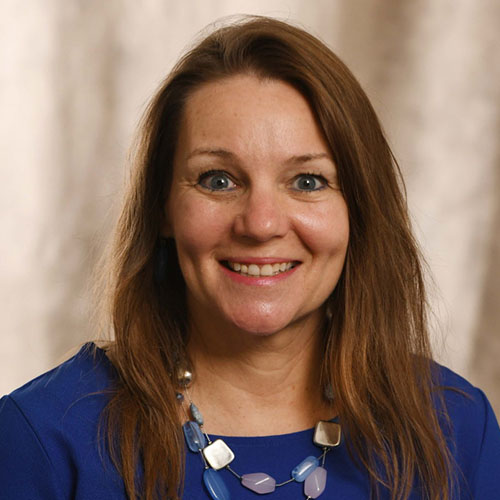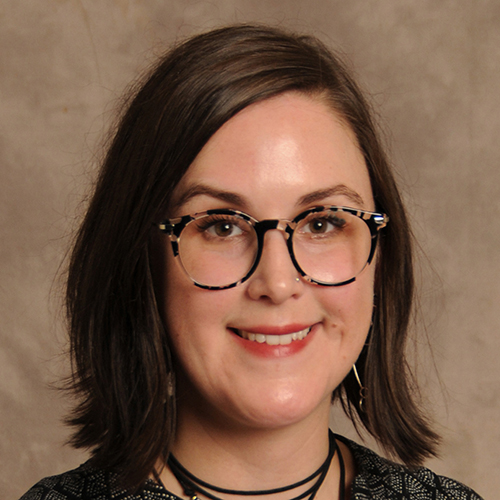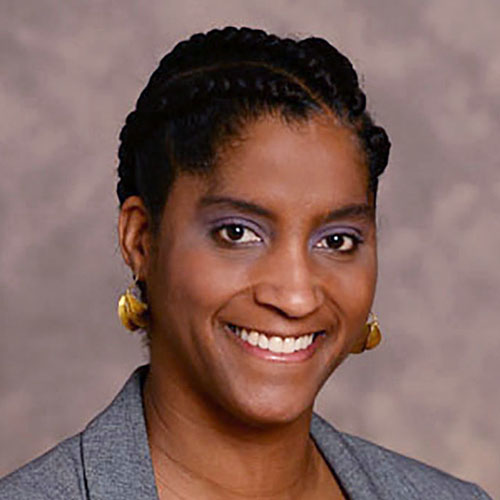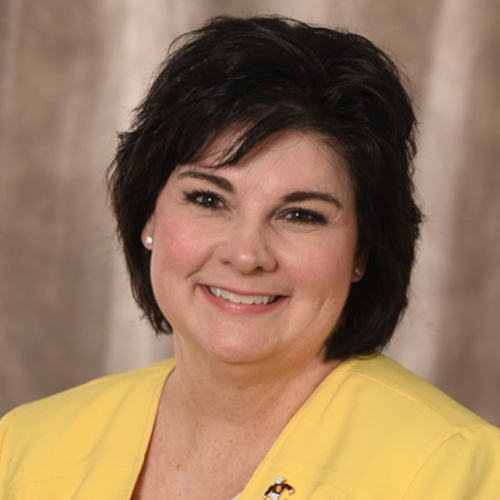Speaker Overview
- Chrys Egan - Transformative Women Leaders
- Jennifer Kruglinksi - Eleanor Antin and the Evolution of Little Nurse Eleanor
- Madison Smith - Exploring the Effects of Slavery in the United States and its Repercussions on African American Relationships
- April Logan - TBD
- Cassidy Joseph - An Analysis of the Portrayal of Women in Comedy Film Trailers
- Elsie Walker - When a film tells the truth of domestic abuse: teaching The Invisible Man (2020)
- Katie Delezenski and Katie Prinkey - GLAM as Non-compliant Institutions
- Lance Tressler - Conquering Fear Through Unity Intersectionality of LGBTQIA+ and Women’s Rights
- Tessah Goode - Picture-Perfect Pain: Educating Tattoo Artists about the Overlaps between Self-Harm and Tattooing among Women
- Maggie Atherton, CJ Atherton, Lian Peach, Justice Jensen, Hannah Brooks - Freedom, Learning, Advocacy for Reproductive Equity (FLARE): Accomplishments, Current initiatives, and Future Plans at Salisbury University
- Provost Laurie Couch - TBD
Chrys Egan

Transformative Women Leaders
The Transformative Women Leaders (TWL) book series provides a dynamic exploration of international women leaders overcoming obstacles, redefining leadership, and diversifying power. The series considers innovative and emerging areas of women’s leadership in global contexts. Emerald publishing, in the United Kingdom, partnered with the International Leadership Association (ILA) to launch this new book series on unexamined aspects of women’s leadership, selecting three series co-editors: Dr. Chrys Egan (Salisbury University, Associate Dean of Liberal Arts, Professor of Communication), Dr. Randal Thompson (Fielding Graduate University, Professor of Human and Organizational Systems, Consultant with Dream Connect Global), and Dr. Dionne Rosser-Mims (Troy University, Vice Chancellor, Professor of Adult Education and Global Leadership). All three series co-editors are previous Presidents of ILA’s Women and Leadership community, which previously published the seven-volume book series, Advancing Women and Leadership.
The first TWL book published in 2024 is Genderwashing in Leadership: Power, Policies, and Politics, edited by four female scholars from the UK. This book examines “genderwashing,” where organizational rhetoric and practices differ from workers’ lived experiences, creating illusions of gender equity while hiding organizational biases. Genderwashing highlights hidden biases in organizational policies, procedures, and practices, so that we can address and end these biases.
The second TWL book, also published in 2024, Women Embodied Leaders: Peacebuilding, Protest, and Professions, documents women’s struggles to reclaim their bodies from cultural practices by embracing their own embodied leadership. Edited by a woman scholar active in El Salvador and one in Bulgaria, the books feature cutting-edge scholarship from around the world on bringing women’s whole selves to leadership and social justice.
The TWL series will continue through 2027 with upcoming books on women’s leadership related to spirituality and purpose, generative leadership, the fire of community, and the wisdom of aging.
Jennifer Kruglinksi

Eleanor Antin and the Evolution of Little Nurse Eleanor
Eleanor Antin began to explore aspects of gender and identity in her video and performance art of the early 1970s. Antin developed a performative and videographic investigation into several personae in which she embodied her ideal masculine self, her artistic feminine self, and her professional feminine self: the King, the Ballerina, and the Nurse. In this paper, I will examine the ways Antin investigated agency and gender through the videos and performances of her persona, the Nurse. The first embodiment of Antin’s Nurse was the persona she named Little Nurse Eleanor in her 1976 video, The Adventures of a Nurse (Parts I and II). In Little Nurse Eleanor, Antin explored the professional options available to women in the late twentieth century, such as nursing or secretarial work, as well as the sexualized tropes embedded in the mass media portrayals of those professions. Antin connects the representations in the media to the socialization of gender roles in children through her use of paper dolls to enact Little Nurse Eleanor’s hijinks in the video. After she performed several variations of Little Nurse Eleanor, Antin’s persona of the Nurse evolved from a contemporary figure in rooted in the media of the 1970s, to an historic figure embedded in the nineteenth century’s photographic and journalistic coverage of the Crimean War. In a series of photographic, performative, and video works that Antin created from 1977-1981 and collectively titled The Angel of Mercy, she explored the agency available to the first nurse, in the persona she dubbed Eleanor Nightingale. I will examine how, in the two variations of her Nurse persona, Antin explored the way the contemporary media shaped the professional roles available to women, which simultaneously and reciprocally socialized notions of professional success for young women from the nineteenth and into the twentieth centuries.
Madison Smith


Exploring the Effects of Slavery in the United States and its Repercussions on African American Relationships
African American relationships have been shaped by the history and culture of the United States which continues to have an impact on all parties involved. This paper focuses specifically on the experiences of Black women, who have borne the weight of stigmas perpetuated since the early 1600s. By examining the stripping of the Black man’s independence during slavery, we gain insight into why Black women assumed roles of independence within their families and communities. Recognizing the mythology surrounding both Black men and women allows us to understand how these constructed narratives have fostered competition and undermined community bonds among African Americans.
Tracing these historical patterns reveals critical insights into how addressing these inequities can accelerate gender equality. This paper argues that fostering female empowerment within the Black community requires confronting both racial and gender-based discrimination simultaneously. The findings underscore the necessity of intersectional approaches to social advocacy and reform. Dismantling structural barriers that disproportionately affect Black women, including at the collegiate level and within their own communities, is integral to achieving meaningful change and lasting equity.
By examining the lasting effects of slavery on the pre-perceived Black identity, this research emphasizes the importance of promoting open dialogue within predominantly Black university organizations. Working with young, emerging Black college students during this transformative period of change and adaptation is key. Through exploring both historical and contemporary issues, this study challenges faulty notions and logic that perpetuate division within African American communities.
Ultimately, by uncovering the roots of these enduring challenges, this research aims to foster a sense of community and collective empowerment among Black women. In doing so, it contributes to the broader goal of dismantling systemic barriers and accelerating progress toward gender equality, ensuring that the voices and experiences of Black women are central to the ongoing fight for justice and equity among women.
April Logan

Compulsory Heterosexuality and the Long Struggle for Black Women’s Equality
In this talk, I will discuss my research on turn-of-the-twentieth century editor, performer, author, and public intellectual Pauline Elizabeth Hopkins's novel Contending Forces (1900). Through Contending Forces, Hopkins sought to raise the Black women's club movement's awareness about compulsory heterosexuality's role in its acceptance of women's socio-political marginalization. I am interested in how Hopkins's novel reveals opportunities for accelerating twenty-first action for equality through reimaging women's rights, potential, and relationships with one another.
Cassidy Joseph

An Analysis of the Portrayal of Women in Comedy Film Trailers
Research frequently highlights the stereotypical portrayal of women in media, where they are often confined to supporting roles in Hollywood or underrepresented in journalistic media According to social learning theory, depictions of women on both the small and big screens can reinforce stereotypes, shaping how they are perceived in reality. This research examines how top-grossing movies visually represent women in promotional materials, such as official movie trailers. Movie trailers, designed to entice audiences, create an initial impression that can influence societal beliefs, including perceptions of gender roles. With the application of a content analysis, this project reviewed 82 comedy movie trailers, using the Bechdel Test as a measure of gender representation. The Bechdel Test evaluates whether a film includes at least two named female characters who discuss something other than a man. This test has become a popular tool for assessing gender equality in film.
Findings suggest that lower-grossing films are more likely to pass the Bechdel Test compared to higher-grossing films. Research also indicates that newer films (released during or after the year 2000) are more likely to pass the test than older ones (released before the year 2000). These trends highlight ongoing gender inequality in media and underscore the need to shift female portrayals, particularly in Hollywood's top-grossing comedy genre. One possible explanation for the inaccurate depiction of women in media could be linked to media ownership and leadership roles. The majority of top-grossing films are directed by men, which may normalize stereotypical gender roles. Future research is needed to explore these correlations further and to examine audience perceptions. This project was exploratory in nature, aiming to deepen our understanding of how media representations shape societal norms and to advocate for more equitable and inclusive storytelling within the film industry.
Elsie Walker

When a film tells the truth of domestic abuse: teaching The Invisible Man (2020)
The Invisible Man (2020) begins with a scene that is most dangerous for victims of real-life domestic abuse: a woman is making her escape from the man who has intentionally abused her in a myriad of ways (emotionally, psychologically, physically, and financially). In America, 75% of those women killed by an intimate partner are murdered when they attempt to leave or after they have just left a relationship. As a release just before the first COVID-19 lockdown in America, The Invisible Man resonated even more than anyone could have anticipated. In the immediate aftermath of that first lockdown, domestic violence rose approximately 30% across the globe. Many victims of domestic abuse reported being more severely controlled when house-bound or quarantined. Ironically, it was within the home that many people first encountered The Invisible Man: in March 2020, Universal Pictures released the film to purchase digitally just three weeks after its theatrical release.
Katie Delezenski and Katie Prinkey


GLAM as Non-compliant Institutions
GLAM (Galleries, Libraries, Archives, and Museums) is presently a pink-collar industry. This designation affects pay, funding, and so much more at GLAM institutions. However, GLAM spaces have historically been places of resistance in trying and turbulent times; today is no different. Women are the majority of the workforce in GLAM and they know a thing or two about leading resistance and non-compliance. This presentation will just touch the surface of the long and fascinating history of GLAM resistance in wartime or under repressive and fascist regimes. Under these conditions it is left to GLAM employees (i.e.: women) to protect and preserve cultural heritage and history. Whether it is Rose Valland, who secretly recorded locations of art looted by the Nazis, or the current work being done to protect a Ukrainian library, cultural institutions need protectors. Recently GLAM institutions have been under fire from groups, individuals, and the government. The relentless attacks will not cease in the coming years and we need to be reminded of the important work GLAM workers are doing. This presentation will also serve as a reminder that none of us should obey and comply in advance. GLAM can make bold moves of protest or quiet moves of non-compliance; both are daring resistance. Let recent stories of the National Archives and other cultural institutions be a lesson that for GLAM, there is space for resistance, and acceptance can be full of dangerous consequences.
Lance Tressler

Conquering Fear Through Unity Intersectionality of LGBTQIA+ and Women’s Rights
The topic I would like to share with the International Women’s Conference would cover the intersectionality of fear and oppression of women and the LGBTQIA+ community. My research has uncovered similarities between intimidation, harassment, violence, and faith-biased coercion during the women’s rights movement and the past/current climate towards the gay community.
The message would be delivered by sharing the stories of three brave children who conquered fear and systemic discrimination. I would then focus on three key areas for advancing LGBTQIA+ rights and continuing the process of feminist and gender equality.
- School safe spaces, teacher training, and academic curriculum
- Community involvement
- Political activism
The goal of my presentation would be to build unity of effort in conquering the biases and hateful terrorization of marginalized populations, bring awareness to the effects of these actions on our children, and motivate a grassroots progression of change through unity of effort. Too many children are committing suicide, living in fear of violence, and isolated from family and community. It is time to stand up to oppression and promote the rights outlined in the Declaration of Independence of life, liberty, and the pursuit of happiness. Will you stand with me?
Tessah Good


Picture-Perfect Pain: Educating Tattoo Artists about the Overlaps between Self-Harm and Tattooing among Women
Research shows that there is a lack of education for tattoo artists on how to properly help women who obtain tattoos as a form of self-harm. Although some tattoo artists might be aware of these correlations, many are not or do not know what conversation needs to be held, how to recognize signs, and what resources to recommend to struggling women. The research conducted for this project indicated that there are alarming similarities between engaging in self-harm and obtaining a tattoo among women. Both of these acts can make women feel powerful, allow them to draw satisfaction from a painful experience, help them cope with emotional distress, and provide an outlet for underlying psychiatric disorders. The survey conducted as a part of this project was distributed to tattoo artists and studied their familiarity with the correlation between getting tattoos and engaging in self-harm among women. Based on the results 44.4% of tattoo artists responded “not very well” when asked how well they understand the similarities between tattoos and self-harm among women. The survey also indicated that 88.9% of the tattoo artists would be willing to have an educational pamphlet on this topic in their shops. Research shows that pamphlets can be an effective way to display information. The goal of this project is to create a pamphlet that will familiarize tattoo artists with the similarities between self-harm and tattoos among women. In addition, the pamphlet will provide guidelines to tattoo artists on how to communicate with women about such sensitive topics and a list of helpful resources that they can share with women. In this way, the pamphlet will serve as a valuable resource for both tattoo artists and women. It will help protect the artists’ reputation and career and will provide much-needed help for females struggling with self-harm.
Maggie Atherton, CJ Atherton, Lian Peach, Justice Jensen, Hannah Brooks

Freedom, Learning, Advocacy for Reproductive Equity (FLARE): Accomplishments, Current initiatives, and Future Plans at Salisbury University
Freedom, Learning, and Advocacy for Reproductive Equity (FLARE) is a registered student organization at Salisbury University and a chapter of Planned Parenthood Generation Action. FLARE works to mobilize advocates, raise awareness, and educate on topics regarding reproductive health, justice, rights, and freedom to make lasting changes in our community. Planned Parenthood is a registered non-profit organization that provides affordable reproductive healthcare, sexual education, and other resources to millions of people worldwide. As Planned Parenthood is attempting to reestablish itself on the Eastern Shore, we created FLARE as the first step with direct support from Planned Parenthood Maryland representatives. Our goals include providing an array of resources to Salisbury University Students, including menstrual products, contraceptive options, and information on Planned Parenthood services; educating students on comprehensive sexual health, including mental health, physical health, and psychological well-being; and advocating for Planned Parenthood’s mission and the needs of SU students. FLARE has participated in numerous on- and off-campus human rights and reproductive healthcare initiatives, including advocating for the Reproductive Freedom Amendment, panels and events collaborations surrounding contraception and reproductive rights, and an on-campus period product pilot program with Aunt Flow. Aunt Flow is a women-owned business that aims to help schools and businesses supply free menstrual products for students and employees. SU now has 32 stainless steel dispensers across campus, which hold 50 pads and tampons each that are made of 100% cotton with biodegradable packaging. FLARE is responsible for monitoring and restocking the dispensers and is looking to garner visible student support and volunteers for the program as we continue into the Spring semester.
Provost Laurie Couch

Women’s experience with romantic betrayal
Description here...